Tour of the Lighthouses
Malpica-Faro de Punta Nariga-Ponteceso (estuario del Anllóns)- Faro de Laxe- Camelle- Cementerio de los Ingleses-Cabo Vilán-Camariñas.
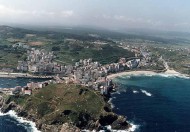
Essential
Malpica
This small fishing town has good beaches and enchanting views of the nearby Sisargas Islands. It is easy to lose track of time while observing the fishermen arriving in their boats, bringing their daily catchs.
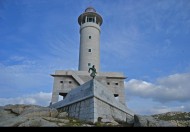
Curious
Punta Nariga's Lighthouse
Situated in the village of Barizo, this was the last lighthouse built in Spain. Designed by the architect César Portela, it is also among the most striking,: an angular tower built on a sharp, rugged outcrop. The lighthouse is a reference point in terms of the integration of architecture within a natural setting.
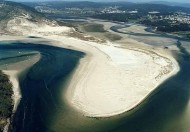
Spectacular
Ponteceso, the Anllóns estuary
The Anllóns estuary has been declared a Site of Community Importance. It provides the habitat for mammals such as otters and genets, as well as fish such as lampreys, sea-trout, salmon and river-trout. Its waters, a mixture of fresh water and seawater, constitute a significant reserve of nutrients for flocks of birds that reach this site during their annual migrations.
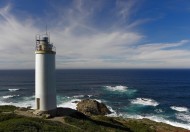
Recommended
Laxe's Lighthouse
The fishing village of Laxe is proof that the Costa da Morte is not just rocky cliffs and rugged promontories, and that the region also has some beautiful spots where one can relax and enjoy the sea breeze and the rumour of the waves. The Laxe’s lighthouse is cylindrical in shape, 11 m in height, painted white with a small access doorway, on a small rise, 50 m above sea level. It emits a beam that can be seen easily from 14 miles away.
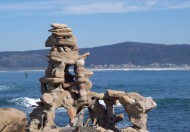
If you have enough time
Camelle
This fishing village is located on a particularly rugged stretch of the coast, and throughout its history Camelle, thought to have been a Viking base during the Middle Ages, has witnessed more shipwrecks than any other village along the Costa da Morte. Near the port we will find the so-called Mann House-Museum, an outdoor exhibition of sculptures and paintings that was built up over the years by the German Manfred, a figure who now forms part of the collective memory of the town of Camelle and, by extension, of the entire Costa da Morte.
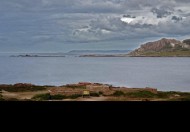
Magical
Cementerio de los Ingleses
In this cemetery lie the earthly remains of 175 sailors who drowned on the 10th of November 1890 when the English training ship "The Serpent" sank. The priest from the village of Xaviña mobilised people in the neighbourhood to ensure that their bodies were buried here.
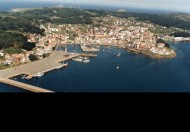
A must
Camariñas
This port is well-known for its famous palilleiras (lace workers). On sunny days you will often see women and young girls making lace in the squares and outside their front doors.
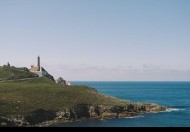
Overwhelming
Cabo Vilano's Lighthouse
In the year 1896, the current lighthouse replaced the old one that had worked since 1854 by steam. It was the first lighthouse in Spain to operate with electric light. From the rectangular white building, a recenlt-built covered passageway leads to the lighthouse tower, 25 metres high, raised on a rocky mass 105 metres above sea level.